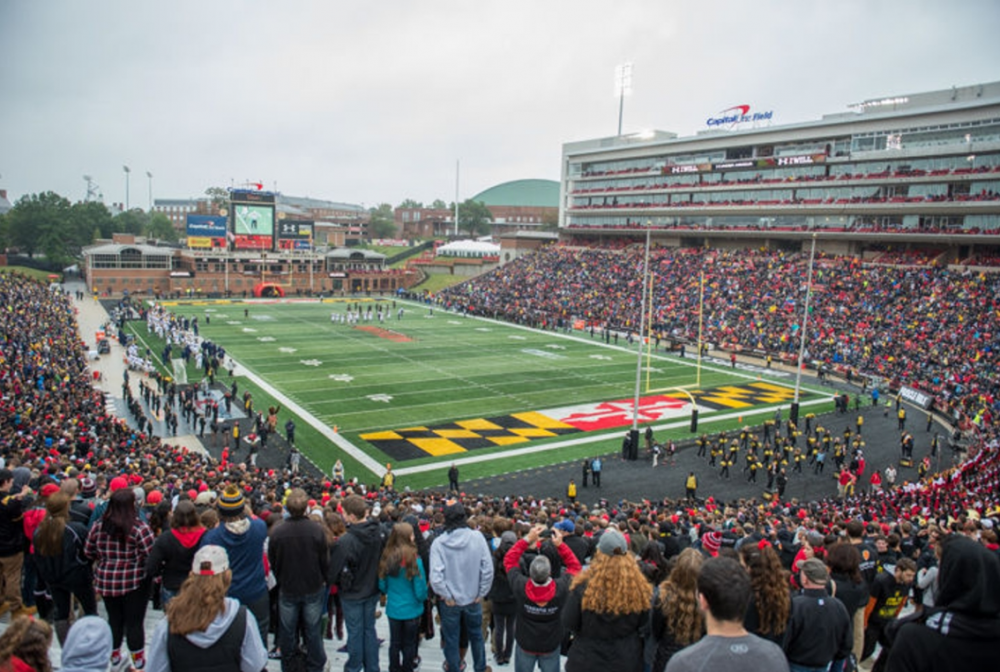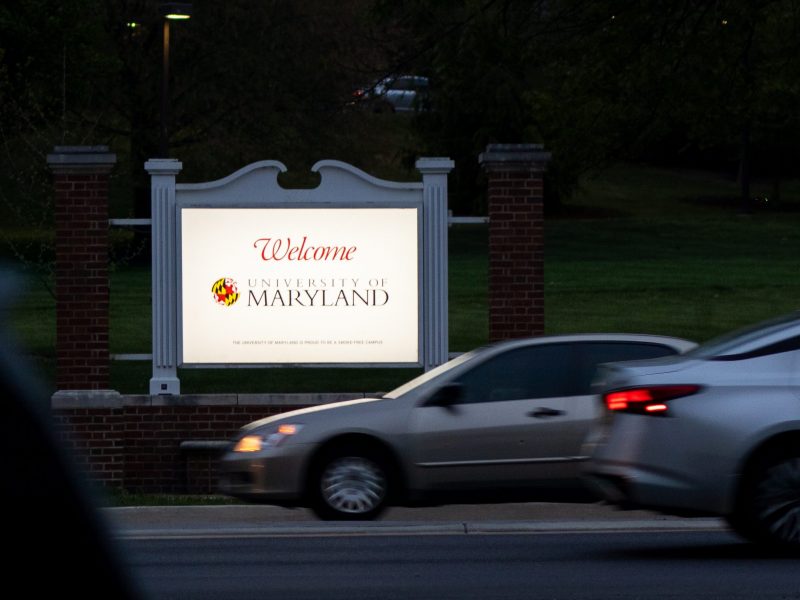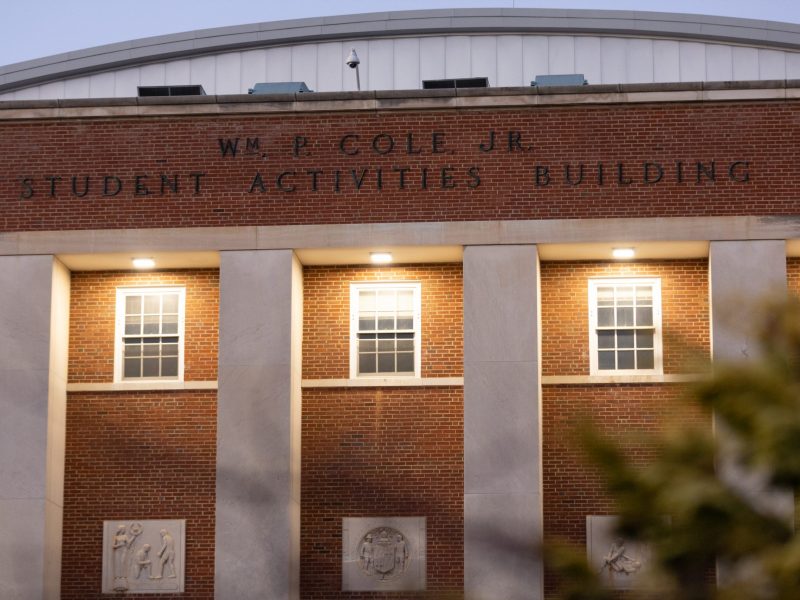All family restrooms at Xfinity Center and Maryland Stadium will become gender-inclusive, Associate Athletics Director Joshua Kaplan announced at a University of Maryland Senate committee meeting Monday.
Kaplan met with the University Senate’s Equity, Diversity and Inclusion Committee to announce the incorporation of gender-inclusive restrooms in some athletic venues as part of a larger discussion on how to proceed with establishing these facilities around the campus. The department began discussing gender-inclusive facilities between a year and a half and two years ago, he said.
“It was a very hot-button topic, something that is still being discussed and digested, but one of the things we thought about was what could we immediately change … for our larger venues,” he said. “Obviously, the easiest piece for us was to make sure our restrooms that could be, would be gender inclusive.”
All signs on family restrooms at Xfinity Center and Maryland Stadium will be relabeled to indicate they are gender-inclusive, Kaplan said. This includes both of Xfinity Center’s second-floor family restrooms and one restroom on each level of Maryland Stadium.
[Read more: UMD Senate committee will review a bill to create more gender-inclusive restrooms]
Venue maps will tell guests where restrooms are located, but do not specify which are gender-inclusive. So on-site staff can direct guests to gender-inclusive restrooms, Kaplan said.
The senate committee wanted to meet with Kaplan to learn more about how the proposed policy impacts the campus, committee chairman Eric Grims said.
Last month, the committee met with Facilities Management Capital Projects Director Bill Olen to discuss how single-user restrooms would be counted to adhere to the international plumbing code, which requires a certain number of separate female and male restrooms.
The code will be updated in the next few months, Olen said.
“There were some basic [questions] last month about how single-user or gender-inclusive restrooms would be counted in terms of x number of [restrooms],” Grims said. “According to building codes, depending on the size of the building, you need x number of [restrooms] for men and women. This doesn’t really include gender non-specific restrooms.”
While the athletic department is working to install more gender-inclusive restrooms, Kaplan said some existing facilities, such as men’s and women’s locker rooms, are “landlocked” and can’t be easily converted to gender-inclusive. But the department will make sure Cole Field House — which is expected to open in 2019 — will have a gender-inclusive locker room, he said.
“A lot of our buildings, unfortunately, I’m sure like many others, are somewhat landlocked in our department, as far as locker rooms go,” Kaplan said. “There is no athletics facilities master plan for gender inclusive facilities.”
The athletic department’s office of Facilities, Operations and Events reached out to Contemporary Service Corporation — a crowd management and security company — as well as peer institutions and venues, including the Redskins’ FedEx Field, to ensure this university adopts proper ushering and security procedures when converting single-user restrooms to gender-inclusive, Kaplan said.
“No one is permitted to deny anyone access to their respective restrooms,” Kaplan said.
[Read more: After Trump’s announcement, a UMD official wants to codify protections for trans students]
Monday’s discussion comes after LGBT Equity Center Director Luke Jensen proposed a bill to the senate in March to urge for the campus to have more gender-inclusive facilities. The bill proposed gender-inclusive locker rooms, changing rooms and restrooms, as well as relabeling single-user restrooms to make them gender-inclusive.
The bill proclaims “the University should address the issue of providing gender-inclusive restrooms in existing buildings where no major renovation is planned. This would likely require a multi-year plan to convert some existing restrooms into multiple-user gender-inclusive restrooms.”
Committee member Phillip Staniczenko presented research results on gender-inclusive restroom policies at 15 universities on Monday, which included the University of Pennsylvania, the University of Oregon and Oberlin College. Staniczenko, who worked with fellow committee members Beth St. Jean and Jennifer Dindinger on the project, highlighted the language of restroom policies and conversion plans from several of these schools at the meeting to draw distinctions based on previous discussions of the topic.
The committee is still researching the bill and hopes to complete it by January or February, Grims said.
“There is a range of different policies we can draw on, depending on the different outcomes we are hoping to achieve, plus some good reference documentation from other universities,” Staniczenko said. “This is a great starting point to think about how the University of Maryland can frame its policy and some resources that could help flesh that out.”



